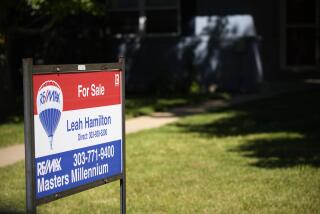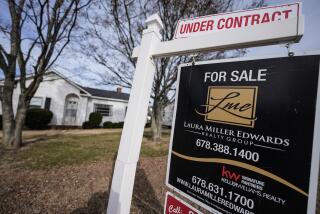Listing in winter may yield higher home price
WASHINGTON — It’s common knowledge verging on holy writ in real estate: Spring is the absolute best time of the year to sell a house.
Right?
But is there hard statistical evidence that listing your house in April, May or June — flowers blooming, birds chirping, lawns greened up after a tough winter — actually nets you a higher price or a shorter time from listing to sale?
Yes, but it’s not as clear cut as you might imagine. There are important nuances in the data. Reviews of realty industry and academic studies suggest that although sales totals generally are highest in May and June, they are actually reflecting listings, contracts and buyer searches that occur earlier in the year.
A study of 1.1 million home listings between 2011 and 2013 in 19 major markets by the national realty brokerage firm Redfin found that, contrary to popular impressions, houses put on the market in winter — defined as Dec. 21 through March 21 — had a 9-percentage-point greater probability of selling within 180 days and at a smaller discount to the initial list price than houses put on the market during the spring months (March 22 to June 21). The advantage jumped to 10 percentage points over summer listings (June 22 to Sept. 20). Winter listers ultimately sold for prices slightly higher than homes listed during any other season.
Though there were geographic differences, researchers found that even in areas with harsh winters, there were statistical advantages for listers. In Chicago there was a 13-percentage-point advantage in selling time for listings initiated in the late December through mid-March period compared with listings in the summer.
In Boston, the advantage was 14 percentage points. In Los Angeles and San Diego, even with their relatively mild winters, the advantage was still evident — 9 points and 11 points, respectively. In Seattle, it was 12 points.
Ellen Haberle, a Redfin economist, said sales agents in Boston and Chicago reported that the greatest effect of winter weather this year was not on buyers — they were scoping out available listings early on. Instead it was the owners who lagged — they were reluctant to list their homes because they didn’t want to shovel snow or start the interior spiffing up needed to properly market their property.
A study conducted by real estate site Trulia in 2012 found that although prices on closed sales peak in May and total sales peak in June, there are significant differences geographically. Prices tend to peak in the Southern states in March and April, according to Trulia, with the exception of Florida, where the high point comes in May. California, Virginia, Oklahoma, Pennsylvania, New York, New Jersey and Massachusetts prices also hit their statistical peak in May. But it’s later — June to August — in Oregon, Illinois, Connecticut, Washington and West Virginia.
A scholarly study published in the Appraisal Journal, a professional quarterly, covering valuations and sales in 138 large and small metropolitan areas found that local “seasonality factors” subtly affect what buyers pay. Using a statistical analysis technique to control for differences based on size, age and other property characteristics, researchers found that time of year definitely affects price.
By how much? It depends on location, but it’s probably more than you’d guess. The researchers created “adjustment” factors that can be used by appraisers to eliminate seasonal variations from their reports.
In the Los Angeles area, for example, the seasonal negative adjustment in February, the local low price point, is a minus 2.5%. In June, on the other hand, the seasonal factor is a plus 1.7%. In Miami, the adjustment is a negative 2.4% in January, a plus 1.3% in July. In Boston, minus 4.4% in February, positive 4.5% in June.
Should the season influence whether — and precisely when — you list your house for sale? Sure. But other, more personal factors should get higher priority: Is your house ready to list and show? Have you interviewed multiple agents to get comparative market analyses on your home’s probable selling price range? Are you prepared to do what’s necessary to sell at maximum price, which may include staging the interior and completing fix-ups and improvements?
Answer those questions, and price realistically based on the market analyses you’ve received from professionals — which may include advice on timing — and you should have a good shot at a successful sale.
Distributed by Washington Post Writers Group.
More to Read
Sign up for Essential California
The most important California stories and recommendations in your inbox every morning.
You may occasionally receive promotional content from the Los Angeles Times.






